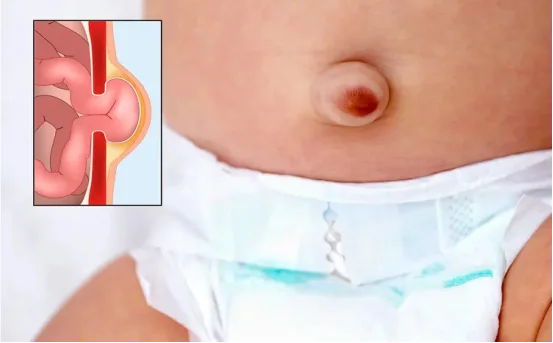Heart transplant surgery is one of the most complex and life-saving medical procedures performed to treat patients with end-stage heart failure or severe heart conditions that no longer respond to conventional treatments. Over the years, advances in surgical techniques, immunosuppressive therapies, and post-operative care have made types of heart transplant surgery more successful and accessible.
While many people may think of a heart transplant as a single procedure, there are several types of heart transplant surgeries, each tailored to the patient’s specific condition, age, and medical history. Understanding these types can help patients and their families make informed decisions about treatment options and outcomes.
Types of Heart Transplant Surgery
- Orthotopic Heart Transplant What It Is :- This is the most common type of heart transplant surgery performed worldwide. In an orthotopic heart transplant, the diseased or failing heart is removed and replaced with a healthy donor heart in the same anatomical position within the chest.Procedure
- The patient is placed under general anesthesia.
- The surgeon removes the diseased heart, typically leaving behind the back walls of the atria.
- The donor heart is sewn into place, connecting the major blood vessels.
- Once circulation is restored, the new heart begins to beat and function normally.
Ideal or
- Patients with advanced heart failure, cardiomyopathy, or severe coronary artery disease.
- Cases where other treatments such as medication, implantable devices, or bypass surgery have failed.
Benefits
- Offers a high survival rate when performed at specialized centers.
- Allows most patients to return to a high quality of life post-recovery.
- Heterotopic Heart Transplant (Piggyback Transplant) What It Is :- In this less common type, the donor heart is connected to the recipient’s existing heart rather than replacing it. The result is that the patient ends up with two hearts working together.Procedure
- The diseased heart is not removed.
- The donor heart is attached to the right side of the patient’s chest.
- Both hearts are connected so they pump in unison, sharing the workload.
Ideal For
- Patients with pulmonary hypertension, where the new heart might initially struggle to function against high pressure.
- Cases where the existing heart may partially recover or still provide some functionality.
Benefits
- Provides additional cardiac output.
- Offers a temporary or backup support system while the new heart adjusts or the patient’s condition improves.
Limitations
- Rarely used today due to complexity and limited long-term outcomes.
- Increased risk of complications due to having two hearts functioning simultaneously.
- Pediatric Heart Transplant What It Is :- This refers to heart transplantation procedures conducted on infants, children, or adolescents with congenital heart defects or pediatric cardiomyopathies.Procedure
- Similar to the orthotopic transplant, but requires more specialized surgical techniques due to the smaller size and anatomical differences in children.
- Donor hearts are matched for size and age.
Ideal For
- Children born with complex congenital heart defects that are inoperable.
- Pediatric patients with end-stage heart failure due to myocarditis or genetic conditions.
Benefits
- Can significantly improve life expectancy and quality of life.
- Many children are able to return to school and engage in normal activities post-recovery.
Challenges
- Smaller donor pool makes it difficult to find timely matches.
- Lifelong follow-up and immunosuppression are essential.
- Combined Heart and Lung Transplant What It Is :- A combined transplant in which both the heart and lungs are replaced simultaneously from a single donor.Procedure
- The patient’s heart and lungs are removed.
- The donor’s heart and lungs, preserved as a unit, are implanted.
- The major vessels and bronchial connections are reattached.
Ideal For
- Patients with irreversible heart and lung failure, such as Eisenmenger syndrome or cystic fibrosis.
- Individuals whose conditions affect both the cardiac and pulmonary systems.
Benefits
- Offers a chance of survival for patients not eligible for single-organ transplant.
- A complete replacement ensures better organ function and quality of life.
Risks
- Increased surgical complexity.
- Higher risk of rejection and complications.
- Domino Heart Transplant What It Is :- In rare situations, a patient who receives a heart-lung transplant may donate their own healthy heart to another patient in need. This sequence of transplants is called a domino transplant.Procedure
- Patient A receives a combined heart-lung transplant.
- Their original heart (which is still functional) is transplanted into Patient B.
Ideal For
- Rare cases where the first patient’s lungs are the only failing organ, but combined transplant is required.
- Allows two patients to benefit from a single donor.
Benefits
- Maximizes the use of donor organs.
- Shortens waiting time for some recipients.
Challenges
- Very complex logistics and timing.
- Requires two surgical teams and precise coordination.
Conclusion
Heart transplant surgery continues to evolve with advances in medical science, technology, and surgical techniques. The type of heart transplant performed depends on several factors including the patient’s medical condition, age, pulmonary pressures, and availability of donor organs.
While the orthotopic heart transplant remains the gold standard and most frequently performed, heterotopic, pediatric, combined heart-lung, and domino transplants each serve a vital role in addressing unique and complex patient scenarios.
Regardless of the type, heart transplantation remains a life-saving option for many individuals with end-stage heart disease. The success of these procedures lies not only in surgical expertise but also in post-transplant care, immunosuppressive management, and patient lifestyle adaptations. Early diagnosis, timely referral to transplant centers, and ongoing follow-up can make a critical difference in the long-term outcomes of heart transplant patients.
If you or a loved one is considering heart transplantation, it is essential to consult with a multidisciplinary transplant team that can evaluate your case and guide you through the most suitable type of transplant surgery tailored to your needs.























